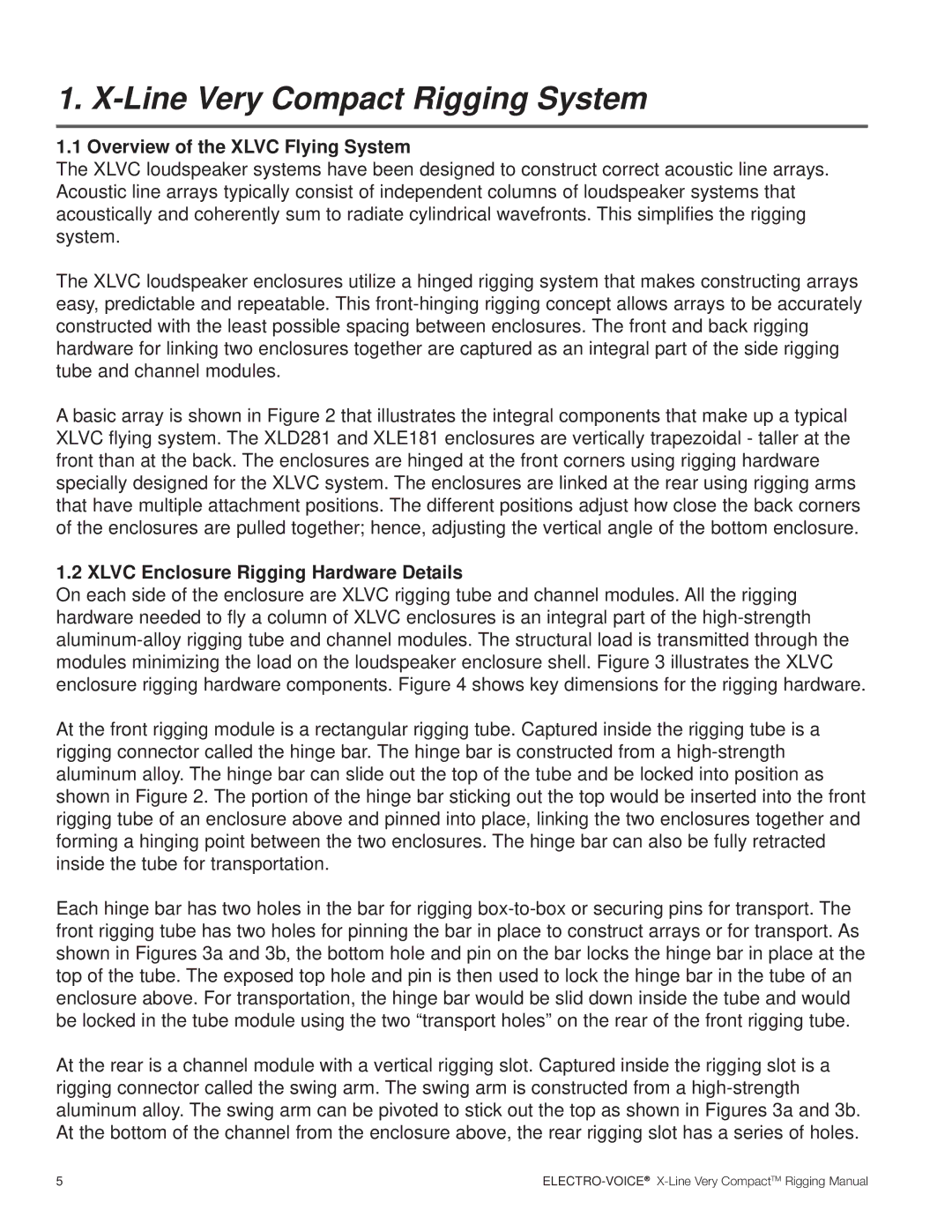1. X-Line Very Compact Rigging System
1.1 Overview of the XLVC Flying System
The XLVC loudspeaker systems have been designed to construct correct acoustic line arrays. Acoustic line arrays typically consist of independent columns of loudspeaker systems that acoustically and coherently sum to radiate cylindrical wavefronts. This simplifies the rigging system.
The XLVC loudspeaker enclosures utilize a hinged rigging system that makes constructing arrays easy, predictable and repeatable. This
A basic array is shown in Figure 2 that illustrates the integral components that make up a typical XLVC flying system. The XLD281 and XLE181 enclosures are vertically trapezoidal - taller at the front than at the back. The enclosures are hinged at the front corners using rigging hardware specially designed for the XLVC system. The enclosures are linked at the rear using rigging arms that have multiple attachment positions. The different positions adjust how close the back corners of the enclosures are pulled together; hence, adjusting the vertical angle of the bottom enclosure.
1.2 XLVC Enclosure Rigging Hardware Details
On each side of the enclosure are XLVC rigging tube and channel modules. All the rigging hardware needed to fly a column of XLVC enclosures is an integral part of the
At the front rigging module is a rectangular rigging tube. Captured inside the rigging tube is a rigging connector called the hinge bar. The hinge bar is constructed from a
Each hinge bar has two holes in the bar for rigging
At the rear is a channel module with a vertical rigging slot. Captured inside the rigging slot is a rigging connector called the swing arm. The swing arm is constructed from a
5 |
